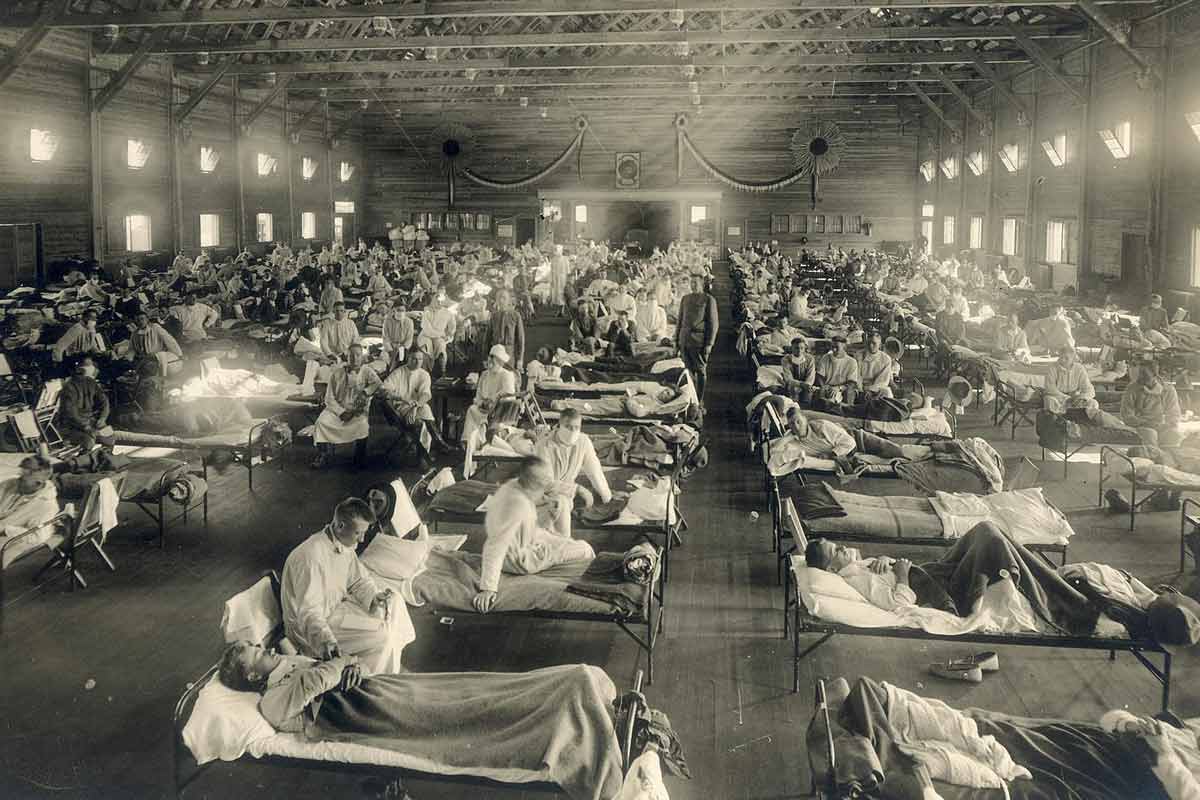UNO Experts Compare Pandemics: COVID-19 Versus 1918 Flu
Mary Lyons-Carmona, Ph.D., from the UNO Department of History, and Bill Tappich, Ph.D., from the UNO Department of Biology, discuss the similarities and differences between the current pandemic and the flu pandemic from a century ago.
- published: 2020/04/22
- contact: Dave Ahlers - Omaha Athletics
- search keywords:
- biology
- history
- coronavirus
- health
- wellness

The scope of the current COVID-19 pandemic is difficult to fathom.
The rates of infection and death worldwide have drawn comparisons to the last pandemic of this size, the "Spanish Flu" pandemic of 1918.
“The behavior of the pandemics are similar in the way the infection has spread and created the disease consequences,” says Bill Tapprich, Ph.D., a professor of biology and a virologist at UNO. “The Spanish Flu of 1918 is the last one that had this kind of impact on the world."
However, Tapprich says, that is where the similarities end.
“The viruses themselves and the way they behave are quite different.”
Corona viruses have existed before the current pandemic, just as influenza was around prior to 1918. What has made both pandemics so severe is that both were/are new versions of the virus.
“New strains of a virus are usually from a different species,” Tapprich says. “We know that in 1918, the flu strain came from pigs.
“SARS and MERS are other coronaviruses. SARS came from civets and MERS from camels, and they made their way to humans. Because of that, there is no immunity or cross-immunity in the population. When that happens, it’s usually deadly for the new species.”
Both health crises were/are a product of their time. The world is more mobile than it was in 1918 with international travel well within the financial reach of many. Indeed, even travel within individual countries and states is much simpler today than it was more than a century ago. But that mobility made it much easier for the COVID-19 virus to spread.
In 1918, the biggest facilitator in the global spread of the Spanish flu was World War I.
A CDC summary of the 1918 Flu Pandemic
“What actually prevented the 1918 flu from being contained was the fact that it wasn’t our No. 1 priority,” says Mary Lyons-Carmona, Ph.D., an adjunct faculty member with a focus on 20th century history, at UNO. “In order to contain the flu, you should have people stay at home. In order to promote the war, you want people out on the streets – Liberty Loan drives, parades and of course, the military draft. All of these things worked against containing the flu.”
In spite of its name, the "Spanish Flu" is believed to have originated at an Army base in Fort Riley, Kan. When U.S. soldiers were sent to fight in Europe, they brought the virus with them, infecting countless more soldiers and spreading the virus into the civilian population.
That process was repeated when the war ended and American soldiers returned to their bases back home.
“As soon as these people came stateside, to Boston – Camp Devins, to Kansas – Fort Riley; or in Iowa – Camp Dodge; an outbreak would start within the military community and then within a matter of days, spill over into the civilian community,” Lyons-Carmona says.
Tapprich notes that more soldiers in World War I died from the flu than from bombs and bullets.
In 1918, the world was still years away from a licensed vaccine for the flu. Back then, as today, when the seriousness of the crisis was fully realized, public spaces were closed and people were told to stay home and wear masks.
Tapprich says these mitigation efforts, in conjunction with modern medical research, are key to the current threat.
“We need to buy time for a vaccine or a successful antiviral. This virus is not going away.”
About the University of Nebraska at Omaha
Located in one of America’s best cities to live, work and learn, the University of Nebraska at Omaha (UNO) is Nebraska’s premier metropolitan university. With more than 15,000 students enrolled in 200-plus programs of study, UNO is recognized nationally for its online education, graduate education, military friendliness and community engagement efforts. Founded in 1908, UNO has served learners of all backgrounds for more than 100 years and is dedicated to another century of excellence both in the classroom and in the community.
Follow UNO on Facebook, Twitter (X), Instagram, LinkedIn, and YouTube.